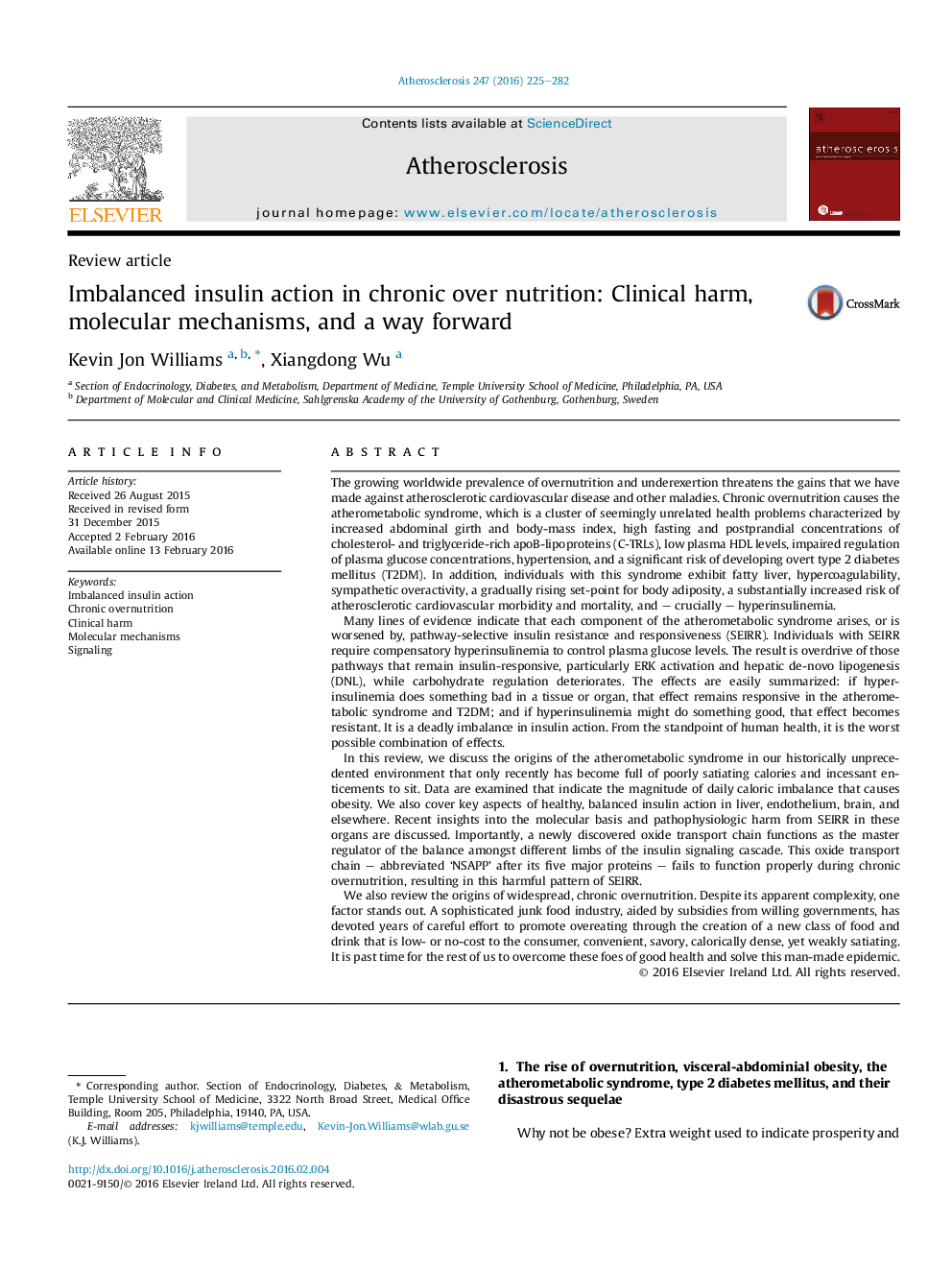| Article ID | Journal | Published Year | Pages | File Type |
|---|---|---|---|---|
| 5943321 | Atherosclerosis | 2016 | 58 Pages |
: this review coversâ¢Normal, balanced insulin action in liver, endothelium, brain, and elsewhere.â¢What goes wrong - clinically and molecularly - in states of chronic overnutrition.â¢How overnutrition and underexertion have become such widespread problems.â¢What we might do next to solve this man-made epidemic.
The growing worldwide prevalence of overnutrition and underexertion threatens the gains that we have made against atherosclerotic cardiovascular disease and other maladies. Chronic overnutrition causes the atherometabolic syndrome, which is a cluster of seemingly unrelated health problems characterized by increased abdominal girth and body-mass index, high fasting and postprandial concentrations of cholesterol- and triglyceride-rich apoB-lipoproteins (C-TRLs), low plasma HDL levels, impaired regulation of plasma glucose concentrations, hypertension, and a significant risk of developing overt type 2 diabetes mellitus (T2DM). In addition, individuals with this syndrome exhibit fatty liver, hypercoagulability, sympathetic overactivity, a gradually rising set-point for body adiposity, a substantially increased risk of atherosclerotic cardiovascular morbidity and mortality, and - crucially - hyperinsulinemia.Many lines of evidence indicate that each component of the atherometabolic syndrome arises, or is worsened by, pathway-selective insulin resistance and responsiveness (SEIRR). Individuals with SEIRR require compensatory hyperinsulinemia to control plasma glucose levels. The result is overdrive of those pathways that remain insulin-responsive, particularly ERK activation and hepatic de-novo lipogenesis (DNL), while carbohydrate regulation deteriorates. The effects are easily summarized: if hyperinsulinemia does something bad in a tissue or organ, that effect remains responsive in the atherometabolic syndrome and T2DM; and if hyperinsulinemia might do something good, that effect becomes resistant. It is a deadly imbalance in insulin action. From the standpoint of human health, it is the worst possible combination of effects.In this review, we discuss the origins of the atherometabolic syndrome in our historically unprecedented environment that only recently has become full of poorly satiating calories and incessant enticements to sit. Data are examined that indicate the magnitude of daily caloric imbalance that causes obesity. We also cover key aspects of healthy, balanced insulin action in liver, endothelium, brain, and elsewhere. Recent insights into the molecular basis and pathophysiologic harm from SEIRR in these organs are discussed. Importantly, a newly discovered oxide transport chain functions as the master regulator of the balance amongst different limbs of the insulin signaling cascade. This oxide transport chain - abbreviated 'NSAPP' after its five major proteins - fails to function properly during chronic overnutrition, resulting in this harmful pattern of SEIRR.We also review the origins of widespread, chronic overnutrition. Despite its apparent complexity, one factor stands out. A sophisticated junk food industry, aided by subsidies from willing governments, has devoted years of careful effort to promote overeating through the creation of a new class of food and drink that is low- or no-cost to the consumer, convenient, savory, calorically dense, yet weakly satiating. It is past time for the rest of us to overcome these foes of good health and solve this man-made epidemic.
